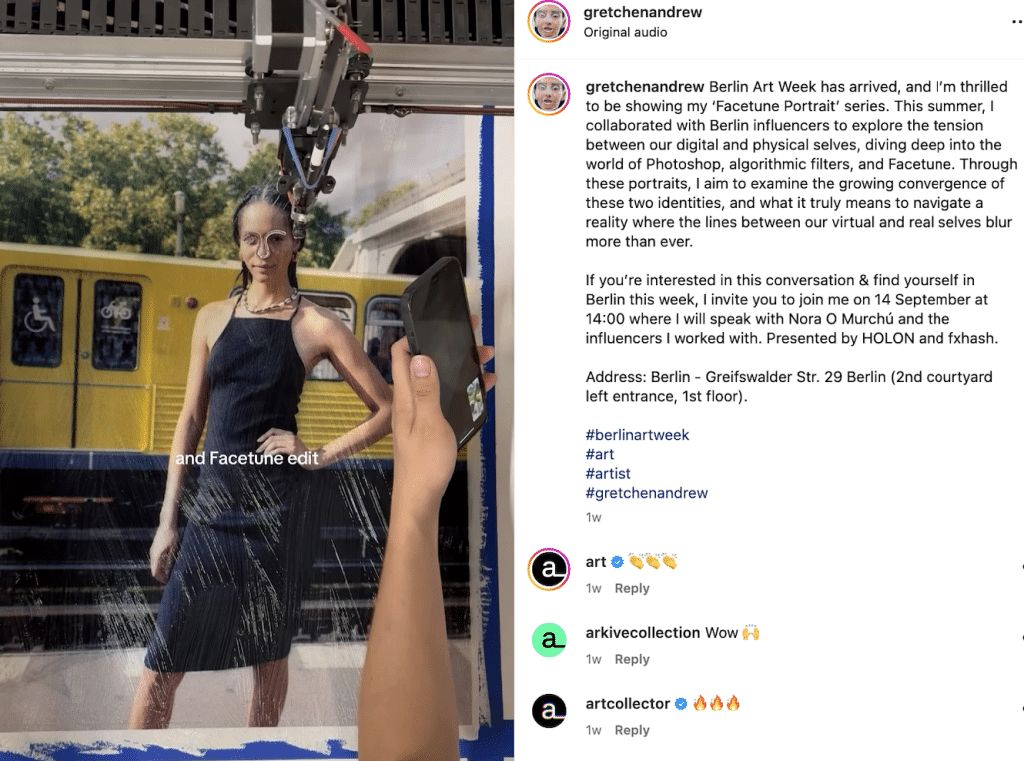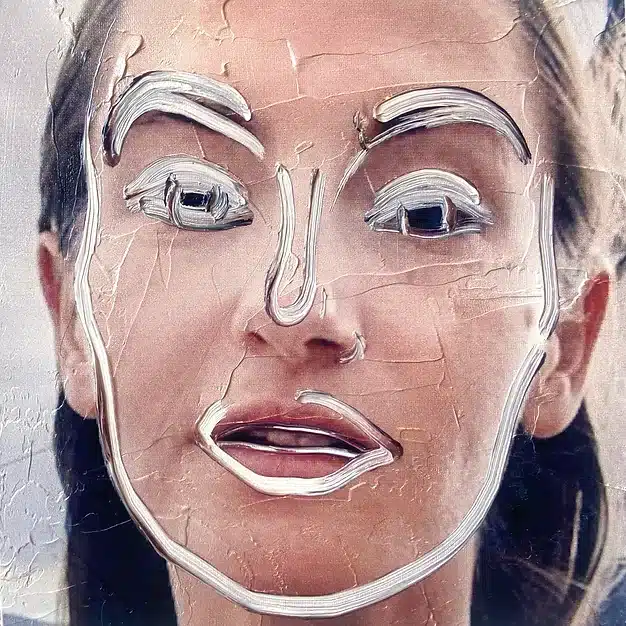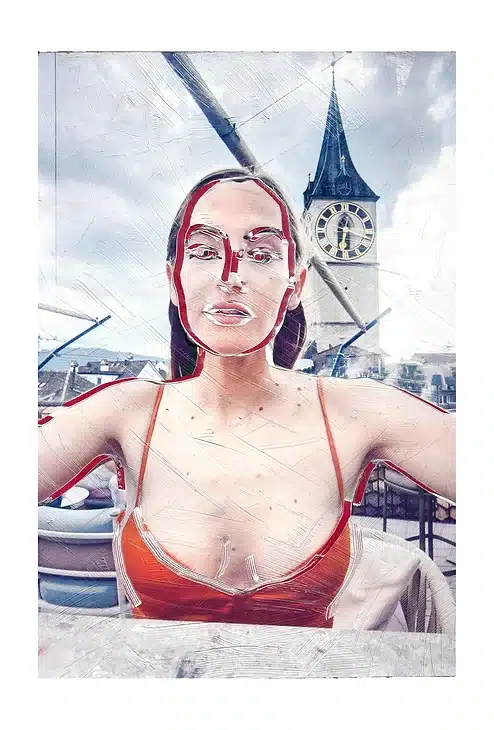Do filters, Facetune and Photoshop affect our physical selves? This is one of many interesting questions artist Gretchen Andrew asks with her new series of ‘Facetune Portraits’ which have just been shown at Berlin Art Week at HOLON gallery, using fx(hash), a generative art platform. Facetune is an app used to edit, enhance, and retouch photos on a user’s device, often used for portrait and selfie editing.
We understand portraiture largely as an exchange between artist and sitter, there are all sorts of power dynamics at play like who commissioned the work and why, who is depicted and why, and now we have a third player, digital technology. Andrew, who left a career in Silicon Valley in 2012, has a unique concept and approach. Usually a portrait would capture a likeness but, in this process, as she says, ‘likeness is turned on its head’.
This new series comprises portraits of five Berlin based influencers, subjects familiar with presenting a certain image online and how their appearance will affect engagement with viewers and ultimately the algorithm of whatever platform they’re on, which could impact their sense of self, wellbeing and also income. Most people online, influencer or not, would agree that there is a correlation between beauty and attention, or ‘reach’.


These portraits which merge generative art, robotics, and oil painting were displayed on the wall of HOLON as you’d expect in an art gallery, but Andrew also created a studio-setting where you could view and experience the code and robot at work as well as see on screen examples of the concepts being explored.
Andrew followed a traditional style of portrait taking, snapping a photo, and then applied a contemporary force, the images were input to a special printer at Matr Labs that turns photos into wet oil paintings. The second robot applies the algorithmic modifications. The artist shares the code for her XY plotter (a two axis device that can move a pen to draw anything) on her website. Her studio open-sourced the design she is using, so that anyone can experiment with the robot, like an IKEA guide. Andrew said ‘the studio designed these custom robotics to be reproducible anywhere in the world for under $500. This opens the opportunity to reproduce the robot at galleries and museums that wish to display the live process as well as the finished work. It also makes the technical process of robotics accessible to those interested in learning or teaching it to students. All designs have been made open source and a How To hardware and software guide will be released with The Mud Foundation and The British Computer Society in summer 2024.’
Upon these wet surfaces a robot would then brush or smudge the image with redactions or additive edits inspired by how commonly used algorithmic filters prescribe a person look better, ‘beautifying’ seems to be the intent says Andrew but actually as she perceives it’s more than meets the eye. The algorithm is normalising and homogenising, it has the ability to compress features into a single look.

She’s curious about what happens or how we feel when you present the contrast between the original and the modified image. She has said what manifests is a depiction of tension, or ‘the uncanny valley in the opposite direction’. The uncanny valley is a theory that describes the ‘eerie feeling’ you might get gazing upon a robot with human-like characteristics.
The algorithm she uses doesn’t touch the clothing or environment of the image so these details are what remains to speak ‘the truth’ about how the person lives or wants to present themselves. The result is a ‘contrast of realities between the edited and original image’, or the tension between who we are and who AI says we should be.
The artist poses a very interesting provocation with this new body of work, usually as she says, the changes to an image happen in a liminal, invisible, digital space. With these oil paintings you see the change be enacted by the robot informed by an algorithm in real time. Andrew says the Facetune Portraits project is not necessarily to judge if Facetune and the like are good or bad but to explore the tension between how we live our lives both digitally and in the real world. That being said, the algorithm she has adapted from the commonly used programs seem to have a ‘standard’ for beauty, improvement or ‘enhancement’, in that, the subject’s eyes get larger, lips larger, breasts larger and features more rounded.
To learn more about this timely and interesting subject you can enjoy a thoughtful artist talk here. You can follow the artist on Instagram here. Andrew will be showing work at Paris Photo in November.